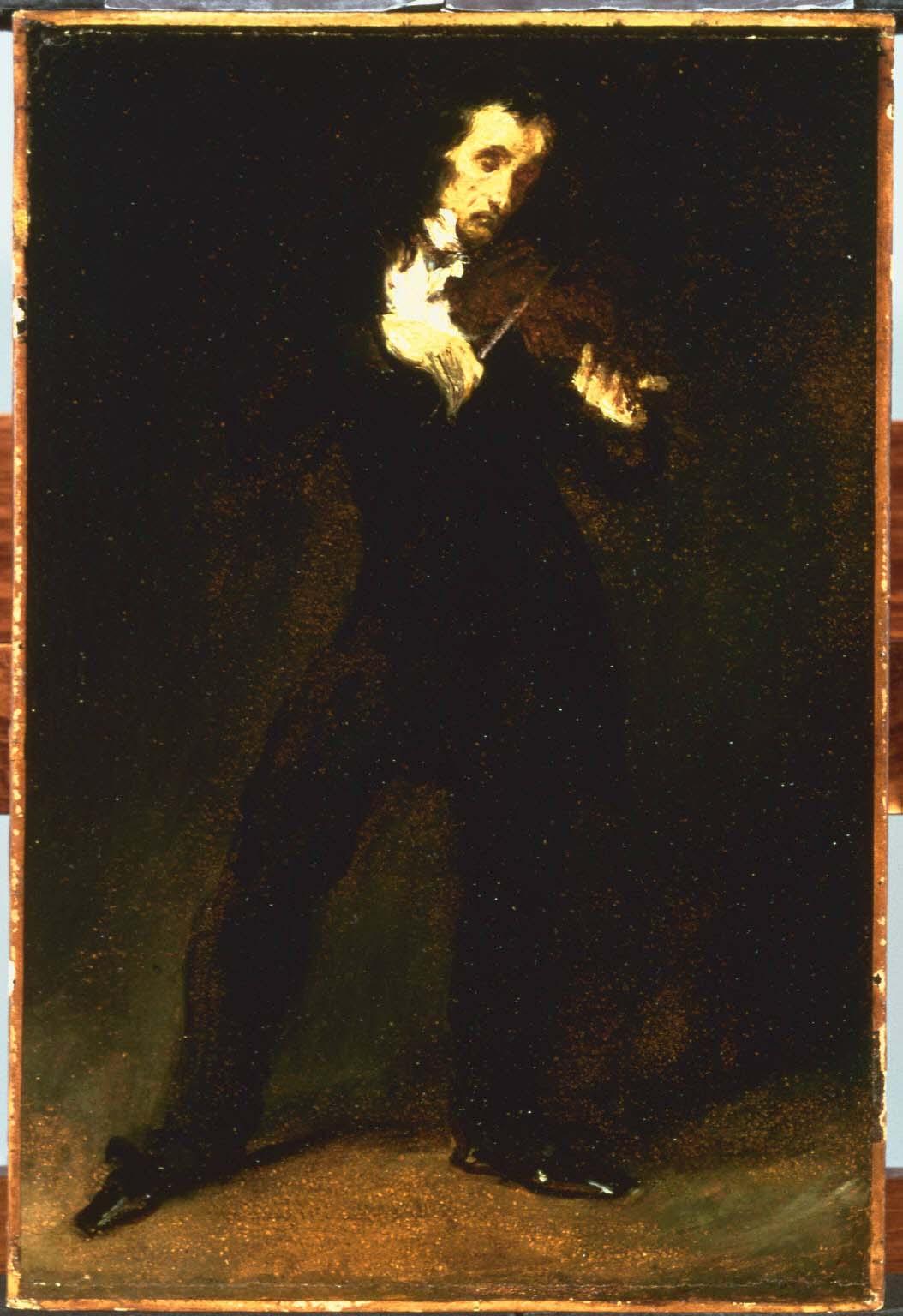Paganini
Ferdinand-Victor-Eugène Delacroix ( 1831 )

Eugene Delacroix heard the legendary Italian violinist and composer Nicolo Paganini play at the Paris Opera on March 9, 1831, and painted the small, full-length portrait of the virtuoso a short time later. Contemporary accounts, confirmed by Delacroix’s painting, make clear that Paganini’s appearance was strange, if not repellent. He was tall and thin, cadaverously pale, with missing teeth and shoulder-length black hair. In performance, however, he charmed, and his presence was electrifying. It was noted that he played with his right foot thrust forward beating time, while his garments flapped around his skinny frame. Delacroix’s portrait of Paganini, the only one he painted of a contemporary celebrity outside his circle, shows the violinist in concert and is executed with an energy and brilliance that match the playing of its subject. The black-clad figure of Paganini is barely distinguished from the dark background, as he stands with his weight on his left foot, his right leg forward and bent at the knee. Light falls only on his face, with closed eyes, his all-important hands, and his shirt front. The line of the bow shines against the violin, itself barely discernible against the surrounding darkness.
Delacroix, who was a great music lover and played the violin, wrote in his journal about the relationship between music and painting, comparing painted sketches and musical improvisations, and likened the act of painting to playing the violin. His portrait of the virtuoso, rough and sketch-like in its gestural brushstrokes and finish, is a perfect painterly equivalent of Paganini’s performance style and a distillation of the romantic concept of genius. Duncan Phillips bought three paintings by Delacroix and a charcoal-and-watercolor drawing. Early on, Phillips admired Delacroix for his liberating effect on French art and for his expressive drawing and emotion-laden color, but objected to his dependence on literary sources. For this reason Phillips, who called the Paganini a “tiny soul-portrait,” considered it not to be a typical work by Delacroix.